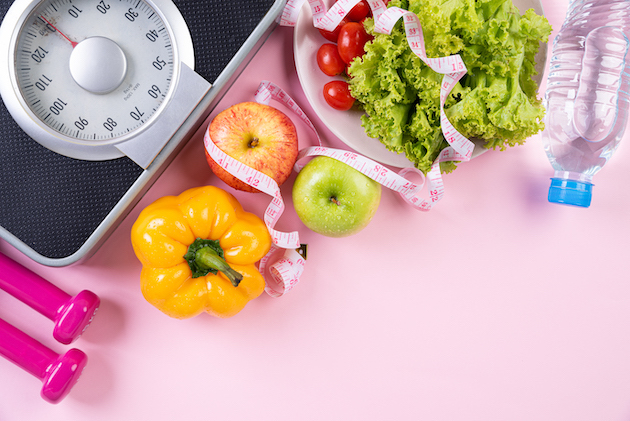Anyone who has tried to break a bad habit knows how hard it can be and how easy it is to stumble and fall back. But hard doesn't necessarily mean impossible or unattainable. Let's talk about dopamine.
While it is possible to break free from cocaine or heroin addiction, it is not worth giving in to legal addictive substances such as alcohol and sugar or addictive activities such as unhealthy sex, social media, or smartphone addiction.
How to recognize addiction?
What is dopamine?
The frontal lobe and dopamine
Dopamine in food
The effects of dopamine on the brain
Getting out of the cycle
5 stages of change
A support system is the key to success
How to recognize addiction?
Addiction occurs sooner or later with the use of food, drugs, alcohol, and tobacco, but can occur with any substance or activity that produces a sufficiently large burst of dopamine in the brain.
Some signs of addiction:
- A strong desire to use a substance or engage in an activity that provides pleasure
- The need for increasingly larger quantities
- Addiction (difficult to stop or quit)
- High probability of relapse
- Bad impact on the individual and/or society
Usually, the first to notice the problem are those close to them, not the addict themselves. Addiction is often accompanied by sleep disorders, being significantly overweight or underweight, irritability, anxiety, fatigue, incomprehensible decisions, etc. However, since these symptoms can also be caused by something else, it is easy for the addict to deceive himself and others.
What is dopamine?
Dopamine is the motivation molecule

When we are dealing with harmful behaviors, mood disorders, addictions, or overeating, we cannot get past dopamine. Dopamine is a neurotransmitter that which controls our motivation, emotions, activity, blood pressure, sleep, concentration, etc..
Dopamine is part of the limbic system of our brain, or the old brain as some like to call it. The limbic system is associated with the satisfaction of biological needs and emotions. It regulates mood and readiness for action, emotions, learning and memory processes.
Dopamine's role in this old and simple part of the brain is to act as a messenger. Hence the name — the motivation molecule. In other words, how motivated, active, or in what mood we are depends largely on our dopamine levels. And, especially important in this context, we tend to repeat those activities that increase our dopamine levels.
Natural activities and substances that increase our dopamine levels and guide our actions through them include: food, sex, love, friendship, and learning something new. But in addition to the limbic system, we also have higher or more complex parts of the brain. One of them is the frontal lobe, which controls our planning and decision-making processes.
The frontal lobe and dopamine
Ideally, the frontal lobe should be in control, but unfortunately, this is not always the case. Bad habits can easily cause the limbic system to overtake the frontal lobe (at least in some areas) and take over.
For example, when dopamine sends a message that we are hungry and need to eat something, we have a choice. This choice is the job of the olfactory lobe. We can decide whether we will eat, when we will eat, with whom we will eat, where we will eat, what we will eat, etc. In a normal state, the final decision should rest with the frontal lobe, not the limbic system.
The best way to increase dopamine levels in your body is to eat healthily, be physically active, and take care of your spiritual health by praying or meditating. But as you can already guess, there are other ways to increase dopamine levels.
It's obviously possible to get a quick dopamine rush using chemical addictive substances. But it's also possible to overdo it with more convenient and everyday activities, foods, and behaviors.
For example, dopamine responds differently to different foods. Chocolate cake and ice cream give a strong response, while broccoli doesn't. The same goes for entertainment, sex, and learning.
The bigger the dopamine rush, the more we want it. If we add the aspect of availability to this, it's pretty clear why we tend to fall into certain traps.
Dopamine in food
Dopamine improves mood, has a positive effect on mental health, and increases happiness. Fortunately, it can dopamine also from foodTyrosine is an amino acid that is naturally produced by the body. Dopamine is made from this amino acid and can be found in protein-rich foods.
- Foods that contain natural probiotics, such as yogurt and kefir, can increase dopamine production.
- Drinks like coffee increase dopamine levels. However, keep in mind that since your dopamine levels drop after drinking, it can lead to caffeine addiction.
Corresponding nutrition is also called dopamine dietThere are several different versions of the diet, but all are based on foods that are believed to increase dopamine. Increasing dopamine through food may include:
- Dairy products like milk, cheese, and yogurt
- Unprocessed meats such as beef, chicken, and turkey
- Omega-3 rich fish like salmon and mackerel
- Eggs
- Fruits and vegetables, especially bananas
- Nuts like almonds and walnuts
- Dark chocolate
Most versions of the diet recommend avoiding alcohol, caffeine, and processed sugar, while some also recommend eliminating or severely limiting starchy carbohydrates. Of course, there are other methods to increase dopamine levels.
The effects of dopamine on the brain
What happens in our brains when we are addicted to an addictive food, substance, or activity? When we regularly overdo dopamine, the following happens in the brain: unhealthy changes.
- The basal ganglia become less sensitive to dopamine, which increases the addict's need for all kinds of dopamine-raising activities/substances. The addict loses interest in goals and activities that were previously very important to him.
- In the lower layers of the limbic system, specifically in the amygdala, the memory of pleasure is created. The neural circuits in the brain are tuned to the wave of pleasure and we associate everything with the addictive activity or substance. Along with this, the addict becomes more sensitive and irritable to the inconveniences of everyday life. General anxiety also increases.
- The frontal lobe changes in gray matter and white matter decreases, which weakens willpower and impulse control, and reduces the ability to anticipate the consequences of one's actions. Perverse stress coping patterns emerge, where the limbic system quite easily overrides the frontal lobe. In this state, the addict is very vulnerable and easily falls back into addiction.
These changes really happen in the addict's brain, and it is very dangerous to start looking for the limit where we still control the situation with our frontal lobe. Isn't the cliché of many addicts that I have everything under control? Don't worry!
A legitimate question may arise: is there any way out of this situation? If a person has already reached such a point that the frontal lobe has been pushed aside and the limbic part of the brain controls activity, there are few dopamine receptors and a very large burst of dopamine is needed to achieve the necessary mood? The good news is that these processes can be reversed.
Getting out of the cycle

Brain recovery is still poorly researched, but some things are already known. In order for the brain to begin to recover, the body first needs to get rid of the remnants of the addictive substance. Depending on the substance and how long the person has been using it, this can take days or weeks.
An alcoholic's brain's gray matter begins to recover about a week after their last drink. Recovery of other parts of the brain and white matter in the frontal lobe takes several months or more.
Many medical professionals believe that it generally takes an average of 90 days for dopamine levels to recover. However, the damage caused by many addictive substances can last much longer, and recovery can take a year or more. Some drugs permanently damage dopamine receptors, preventing full recovery.
5 stages of change
Anyone who tries to break a bad habit or addiction goes through the following 5 stages of change. If you are considering breaking a bad habit, it is good to know what to expect. The five stages are as follows:
- Ignorance – the person does not recognize the problem
- Awareness – recognizes the problem but still acts out
- Preparation – decides to change something and prepares for it
- Action – consciously acts in the desired direction
- Maintenance – new habits are ingrained and do not require conscious effort
These five steps are the most widely used theoretical and clinical framework in the field of mental health. It is used in a wide variety of situations, including smoking, alcoholism, addictions, obesity, exercise, bullying at school, and condom use.
The boundaries between these stages are blurred and there are no precise criteria for where one ends and another begins. However, it is important to understand which stage you are in and how to move to the next stage. The next stage, because it is generally impossible to skip stages.

Anatomy of change — moving from one stage to another
The transition from one state to another certainly involves a certain amount of new information. It could be an unpleasant message from a doctor, a friend's emotional release experience, or knowledge gained in training. Without underestimating the importance of knowledge, it is important to remember that knowledge alone does not lead us forward on the path of change.
In order to move from the second stage to the third, you need to actually change the decision. Until that decision is made, you are still in the second stage, the stage of gaining experience and knowledge.
If you've been stuck in this stage for too long, analyze what's stopping you. Do you need more information, or are you afraid of something? For example, change and the uncertainty that comes with it.
Once you have made a decision and have a plan of action, it is time to move on to stage four. This is the most difficult stage for most people. While the previous stages were more mental and emotional, in the fourth stage you have to actually take action and deal with your thoughts, emotions, and a failing body at the same time.
The first 3-4 weeks are the hardest. During this period, you should stay away from all kinds of temptations as much as possible. However, it takes significantly more time for new and good habits to take root and become established.
Anyway, if you've been consistent enough and dealt with setbacks well, one day the moment will come when you'll make these new and good choices automatically.
A support system is the key to success
The stronger the addiction, the stronger the support system you usually need to climb out of it. In milder cases, counseling or a support person and training are sufficient. It also helps if you can spend at least the first, so-called difficult, weeks somewhere in a controlled, temptation-free environment.
The Healthy Life Center is designed to help, advise, and educate. If you feel like you are helping yourself slowly destroy yourself, ask for help.
It is impossible to predict how long it will take to go through these stages. It depends a lot on the behavior you are trying to change, your personality traits, the environment you are in, etc. But life has shown that most people manage to overcome the most difficult addictions with an adequate support system and God's help.
And even if the trying, relapsing, and trying again takes years in some cases, it's still worth it. I've never met a single person who has overcome an addiction or illness or lost significant weight and then said it wasn't worth the effort.

Allan Randlepp
NutritionistAllan is a nutritionist and trainer whose favorite topics are lifestyle and longevity, including nutrition and physical activity.
Breakfast – to eat or not to eat?





